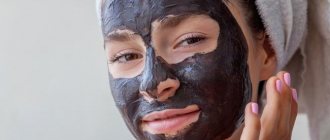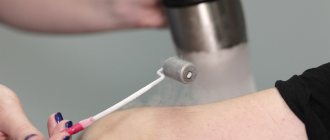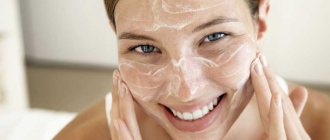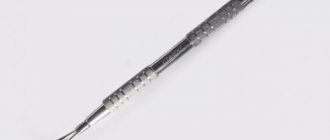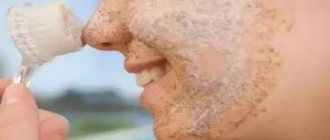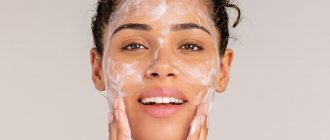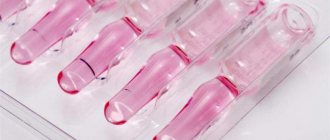A face mask is a quick and easy way to tidy up your skin and restore its beauty and freshness. This procedure is also an excellent reason to rest and relax while the product works and saturates your skin with vitamins and nutrients.
But sometimes even the best face mask may not live up to your expectations - the product doesn’t seem to work, and after applying it, the skin still looks dull. The thing is that, despite the ease of the procedure, you need to use the mask following simple rules .
Apply the mask only to thoroughly cleansed skin
It is important to properly prepare your face for the procedure. If you apply a mask to skin whose top layer consists exclusively of dead cells, you are unlikely to notice any effect - the product will not be able to penetrate through clogged pores - it will remain on the surface. For the mask to really work, after removing makeup, use a scrub or peeling - an exfoliating agent will cleanse the skin, the active components of the mask will enter the skin cells and begin to work. You can also open the pores by steaming the skin or using a warm compress.
How to apply a mask correctly
Clay is a natural product that does not provoke allergic reactions, so there are practically no contraindications for use.
It should not be used only in the presence of open wounds and purulent inflammations on the skin. Before using the mask, you need to do a test for the presence of an allergic reaction to the components: apply a little product to the inner surface of the elbow and leave for 15 minutes.
The result of using the product will be negative if you ignore the following application rules:
- The composition should be applied only to previously cleansed skin.
- Clay is not applied to the skin around the eyelids.
- Products to which there is an individual intolerance, confirmed by an allergy test, are not used as components of the mask.
Cleaning the face before applying clay is carried out in several stages. First, wash with warm water and remove makeup using a lotion that does not contain alcohol.
Make a compress and steam your face to open the pores and allow the beneficial substances to penetrate deeper into the skin layers. Steam your face with either hot water or a decoction of medicinal plants. The best option for a decoction is chamomile.
To apply clay, use a cosmetic brush or fingertips. The second option is more convenient, but you must wash your hands before the procedure. The clay layer should be quite dense, so it will dry out more slowly.
Choose a mask according to your skin type
You should always choose a mask based on the needs of your skin. For example, a nourishing mask will work wonders on dry skin, but will cause clogged pores and inflammation on oily skin. When choosing a mask, always pay attention to the main components in its composition. Masks based on clay and charcoal are suitable for cleansing and caring for oily skin, products with oatmeal and honey will nourish dry skin, and components such as aloe and hyaluronic acid indicate that the product is suitable even for caring for sensitive skin. skin (we asked 30 questions to a dermatologist about face masks in this material).
How long to keep a clay mask on?
This question has a lot to do with the type of dermis and, to some extent, the type of clay used. There are the following standards for the duration of the procedure:
- For dry skin. Dry dermis is highly sensitive to external irritants, so the procedure time for women with this type is chosen to be minimal. Depending on individual susceptibility, the mask application time varies from 5 to 8 minutes.
- For fatty ones. This skin is characterized by increased density and increased functioning of the sebaceous glands. Fatty epithelium prevents the penetration of beneficial substances inside, so the mask can be kept on for up to 30 minutes.
- For combined. Typically, the combination dermis generally looks normal, only in some places the pores are enlarged and increased sebum production is observed. The duration of the application can last from 15 to 20 minutes.
- For the problematic one. Problem skin is distinguished by various defects, which can be evenly distributed over the face or form small lesions. Defects include pimples, acne and blackheads. It is better to find out the type of product for application and the duration of the procedure from a cosmetologist. Usually the composition is applied for 10-15 minutes.
- For age. Aging skin can also be dry or oily, so you should pay attention to this factor.
Apply the mask only with a clean brush
It is convenient to apply cream and gel masks with a special brush or spatula. A flat foundation brush will also work for this purpose. The main rule is that it should always be dry and clean, otherwise the brush can cause the development of bacteria in the product. And this will lead to the mask quickly deteriorating or not working as effectively. If you don't have a special brush and prefer to apply the mask with your fingers, always wash your hands thoroughly before applying.
Relax
Applying a mask is a pleasant beauty procedure during which you need to rest and relax. If you start to fuss and try to do household chores at the same time as leaving, the mask will slide off your face, stretching the skin - the effect after the procedure will clearly not be what you expect (an expert explains here how to keep your face oval in good shape).
How often can you do it?
How often can and should you do it, how many times a week, should you get carried away? The frequency of applying the mask directly depends on the composition, the functioning of the sebaceous glands and hair type . As a rule, most industrial preparations are recommended to be used no more than 1-2 times a week, and self-prepared mixtures - every 2-3 days.
To consolidate the result, the procedure is carried out over several months, without interruptions. If the hair has not received nutrients for a long time, and the problem cannot be eliminated, then the course can be extended for another 1 month.
For the purpose of prevention, masks are used only once a week . If you have split ends, you can’t be lazy – applying oily masks to them is allowed much more often. Masks with gelatin for lamination of curls are recommended to be used only once every 1.5-2 months, otherwise the opposite effect can be achieved.
IMPORTANT: poorly dissolved gelatin can accumulate in strands in clumps, thereby causing hair loss when combing.
Hair can absorb a large amount of substances very quickly, but they are absorbed after some time, so you should not overuse the frequent application of masks.
Now you know how often you can use it.
Keep the mask on for exactly as long as indicated in the instructions.
Longer doesn't mean better. You should not keep the mask on your face for more than the prescribed time. Sometimes it can even harm the skin. For example, long-term use of a cleansing mask can lead to disruption of the skin's natural lipid barrier - after the procedure, it will look dry and dull. And the active components of moisturizing and nourishing masks can cause irritation or even allergic reactions. You should also not allow clay masks to dry out on your face, otherwise they can severely dry out your skin.
What time to apply?
When is the best time to apply a mask to your face? The answer to this question depends on the type and purpose of the product. Exfoliating and cleansing masks, films or with acids are best used after evening cleansing of the skin, at night. Such products remove dead cells, and the skin becomes vulnerable to environmental influences. It takes time to recover, but overnight is enough.
It is also advisable to apply restorative, regenerating and nourishing masks at night. During this time, the skin will get the maximum benefit from the product. Toning and refreshing masks, gels and patches should be applied in the morning or afternoon - they relieve puffiness after sleep, improve color and tone. Sedatives can be used as needed.
The main thing is to remember that after deeply cleansing and exfoliating masks, you should not go out into the sun without SPF. It is not advisable to be in the cold after using a gel mask. And if the skin is dry and flaky, you can’t wait until the evening and try to cover up the problems with foundation - you need to use nourishing formulations.
Remove your mask correctly
After the required time has passed, remove the mask by rinsing your face with warm water - too hot water can cause dryness and flaking of the skin. You can use a special sponge, brush or soft towel to remove the mask - make sure that not a drop of product remains on your face (you can find the 5 best face brushes here). Residue from the mask can cause clogged pores, inflammation and irritation.
The best time to apply a mask
The mask works best when at rest. Relax, listen to your favorite music and think about pleasant things. If you do things around the house, part of the composition will flow down and not all areas will receive the required portion of nutrients.
You need to keep the mask on your skin exactly as long as indicated in the instructions.
The best time to apply a mask is in the evening, before bed, when you don’t need to rush anywhere or be nervous. During sleep, the active ingredients of cosmetics will finish their effect, and the next morning the skin will look its best - toned, rested, radiant. If you have free time in the morning, go-out masks are for you. They are a real salvation for combination skin, as they allow it to look fresh for 5-6 hours.
Most often, face masks have a cumulative effect, so apply them regularly or do it in a course. Usually the manufacturer writes recommendations for the correct use of the mask on the packaging, but you can be sure that it needs to be applied at least once a week. Some products can be used more often, so always read the instructions carefully.
Secure the result with a care product
After washing, wipe your face with a mild toner. Do not use products containing alcohol - they tighten the pores and the effect of the mask will quickly disappear. After toning, apply a creamy texture care product to the skin. Care must be distributed immediately, before the pores close - the cream seals the mask on the face, and the active components of the product remain working in the skin cells. As a result, it will look well-groomed and hydrated longer. If you used a cleansing mask, moisturize your skin with lotion or cream. And after applying a nourishing or moisturizing mask, you can take a light serum or emulsion.
How to dilute a mask
In order for the mask to have the maximum positive effect, before preparing it you need to select clay that is suitable for the characteristics and type of skin:
- The white composition (kaolin) is used as an antiseptic. Suitable for sensitive skin.
- Blue clay is used as an anti-inflammatory and antimicrobial agent. The mask is recommended for acne-prone skin.
- Red clay is a remedy against irritation caused by an allergic reaction or dry skin.
- The pink composition, which is a mixture of white and red powder, delicately cleanses and soothes the skin. Recommended as a rejuvenating treatment for aging faces.
- The yellow composition draws out harmful accumulations from the dermis and saturates it with moisture. Recommended for irritated, sagging, wrinkled faces.
- Black clay is a means for deep cleansing of skin pores and normalizing the functioning of the sebaceous glands.
All of the above types of clay are sold in the form of fine powder. To prepare the mask, the powder is diluted to a creamy consistency. It is advisable to take boiled water; you can also use milk, herbal infusions, and glycerin.
It is important to achieve a dense mass, just like sour cream. If the composition turns out to be more liquid, it will flow after application to the face and may get into the eyes. If you make the mass too dense, it will quickly dry out on your face and the procedure will be ineffective. In addition, a quickly drying mask will remove moisture from the dermis, causing a feeling of tightness on the face.
The composition must be thoroughly mixed so that it acquires a uniform consistency. If lumps or abrasives remain in the prepared mass, they can injure the epidermis when applied.
Important! Dilute the clay in ceramic or glass containers. Metal containers cannot be used, as the cosmetic composition may react with the metal.
For facial care, you can use either a monocomponent clay mask or one that includes additional ingredients that enhance the positive effect on the dermis. When preparing a multi-component product, the first step is to dilute the clay with water, and then add other products.
Usually liquid (water, milk, decoction) and clay are taken in a 2:1 ratio. It turns out to be the perfect consistency. However, when diluting, additional ingredients are taken into account.
So, if you plan to include oatmeal or semolina in the composition, then the clay powder needs to be diluted with a little more liquid, since the solid components will swell. And if you want to make oil or juice into a useful ingredient, then you need less water.
